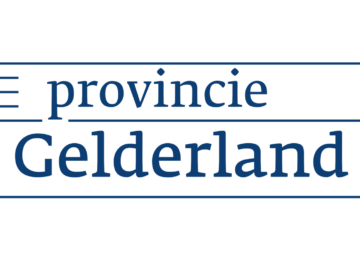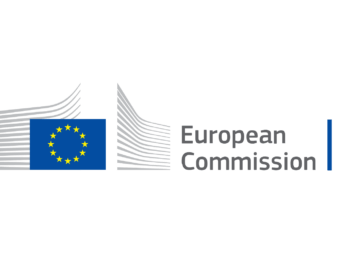Interview with Marieke Koekkoek (Volt) on the role of energy storage in energy transition
The Lower House elections are just around the corner, and Energy Storage NL is curious to see how energy storage is included in the party programs of various political parties. In the run-up to the elections, Energy Storage NL is focusing on 'energy storage in politics'. For this campaign, we interviewed several members of parliament about what they think is the importance of energy storage in the energy system. This time the word: Marieke Koekkoek, member of parliament on behalf of Volt.
What do you think is the main added value of energy storage in the energy system, in the short and long term? And how do you see the role of storage within the energy system itself?
For me, storage is not an end in itself, but a means to make the energy system stable. In the short term, it helps absorb peaks and prevent energy loss, especially now that we have so much solar and wind energy that cannot always be used immediately. We have set firm climate goals as Europe and as the Netherlands, and I think storage should be a natural part of that. Think for example of wind or solar energy, which are very different per season. With storage you can bridge these differences, absorb peaks and prevent a lot of energy from being lost.
What role do you see for energy storage in countering grid congestion, and do you think this potential is currently being adequately exploited?
Storage can certainly make an important contribution to this. Very practical even, because it can often be deployed faster than adding weight to the entire electricity grid. But you shouldn't see it as the golden egg that will solve all our problems at once. You still need a long-term plan, and we also need to learn to be more flexible with our energy use.
What storage can do is help in two ways. On the one hand by absorbing peaks, and on the other hand by enabling the very flexibility that the minister is already aiming for. This requires, however, that you adjust the tariff structure and reward flexibility. Then storage does not become a temporary stopgap solution that we can say goodbye to after five years, but a structural part of how we improve the network.
The risk I see now in the Netherlands is that we are too quick to think up solutions in crisis mode that work in the short term, but create new problems in the long term. That's why it's so important to build storage in structurally right away and also provide certainty about it. Because if you say, "we need you for now, but we won't need you later," that will scare off investors. And that would really be a shame, because right now a market is emerging that can grow even without subsidies.
What do you think is the main reason that the development and integration of storage is still lagging behind in the Netherlands?
I think it is mainly a chicken-and-egg story. On the one hand, we have a very bureaucratic licensing system that slows down projects, and on the other hand we lack a clear, integral vision of how exactly storage fits into the energy transition. Because that vision is lacking, those permits are also slow - it actually reinforces each other.
As far as I'm concerned, we need to address both bottlenecks at the same time. The permitting process can really be less bureaucratic, and at the same time storage must become an explicit part of the climate strategy. If you set clear goals, you often see that rules and implementation processes follow more quickly.
And I also think the government should take the first step here. In a transition, you cannot wait and see or leave it to municipalities alone. The national government - or even better, Europe - must create the frameworks and set the dot on the horizon. Municipalities can then provide the implementation and local involvement, for example in permitting processes or local ownership. But that first move, that direction, that really has to come from above.
How do you assess the current storage strategy and what do you think should be improved?
Frankly, I think there is hardly any real storage strategy now. In the Netherlands, we have no clear national goals and no integral plan for how storage fits into the energy transition. Other countries, such as Germany and Denmark, show that such a plan works: it helps policymakers commit to the long term and gives investors certainty.
So as far as I'm concerned, the Netherlands should draw up a national plan for storage, but embedded in a European climate strategy. Because we don't need to reinvent the wheel, we can learn from countries that are already further along. And it is precisely by working together at the European level that you make the whole system stronger. Especially in border regions, interconnection makes sense: sometimes it is easier to share energy or storage capacity with neighboring countries than with a city on the other side of the Netherlands.
Such a European approach gives more unity, makes cooperation easier and helps us to take steps faster in the Netherlands as well. So it is not only national, but precisely European where we can take the big advantage.
What do you think it takes to go from "think is important" to true priority?
It starts with clear goals. If you really anchor storage in the national and European climate strategy, you give certainty: this is a policy goal for the next ten years, not something temporary. This is crucial, because investments in storage often only pay for themselves after seven years or more. Then you need to know that the government will remain consistent and that your business plan can work in the long term.
That includes setting rates properly and rewarding flexibility so that companies know where they stand. And in addition to smart market regulation, I think the government should also provide targeted support. The market for storage is now getting off to a good start without subsidies, but for forms that really bring stability and are not yet profitable - such as thermal or molecular storage - you do need to offer support, for example via SDE++. That is logical, because this is about a social contribution: being able to use more renewable energy and keeping the system stable.
So in short: clear goals, long-term certainty, incentives in tariffs and support where the market cannot yet deliver. Only then will storage go from something we "think is important" to a real priority.
What can we expect from Volt in terms of storage ahead of the election?
Storage at Volt is given a prominent place in our climate and energy agenda. We believe it should become a central pillar alongside renewable generation and grid reinforcement. Our program therefore states that storage should be a structural part of policy, so that we can maintain a stable and reliable energy supply. That means: establish a national plan, but embedded in a European approach. Because it is precisely by cooperating across borders that we make the system stronger. We are also looking not only at batteries, but also at thermal storage and molecular storage, such as hydrogen. Diversification is crucial here; it is important that we do not bet everything on one technology, but rather develop a mix that suits the Netherlands and at the same time is strategic for the future and makes knowledge export to other countries possible.
In short, Volt is committed to a stable, sustainable and innovative energy system in which storage is indispensable, both for our energy security and for achieving climate goals.





